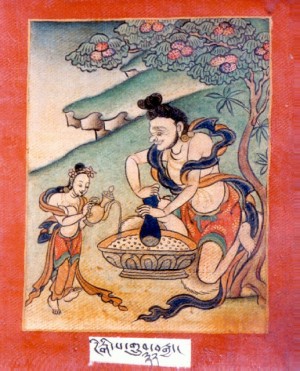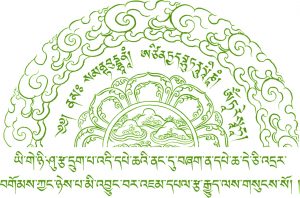Tengipa was the minister to the King of Indrapala in Saliputra. He and the king became disgusted with samsara, so they travelled to the cemetery where Luyipa lived where they submitted their bodies as an initiation fee. Luyipa initiated them into the mandala of Cakrasamvara.
The three, master and students then begged alms in Odissa, where the king was sold (The story of Darika). Two weeks later, Luyipa and the minister arrived at Juntapura. Here, the minister was sold for 300 gold coins to a wine-seller.
The Brahman carried out his duties as a wine-seller, and eventually became the chief of the woman’s household. One day, after finishing his chores, he was not brought his food because the wine-selling woman forgot to bring it over. When finally she remembered, she sent someone to bring food to him only for the person to see 500 divine maidens making offering to the Brahman, whose body was shining. When she received the news, she repented of what she had done and went over to the minister and apologized for making him work for 12 years under her. She then offered to make up for her mistake by asking him to be her object of reverence for 12 years. He did not accept the offer but preached the Dharma to the wine-selling woman and the people of Jintapura, he gave them instructions for practice. He then went to the realm of the Dakas with 700 followers.
Because he worked as a rice-husker, he became known as Tengipa. He was sold to the wine-seller because of his considerable attachment to being a Brahmin; the wine-selling woman, having taken him in, cut down his pride in caste.
em



 Cintamani - Meditação e Arte - Copyright 2020 - Todos os direitos reservados.
Cintamani - Meditação e Arte - Copyright 2020 - Todos os direitos reservados.